
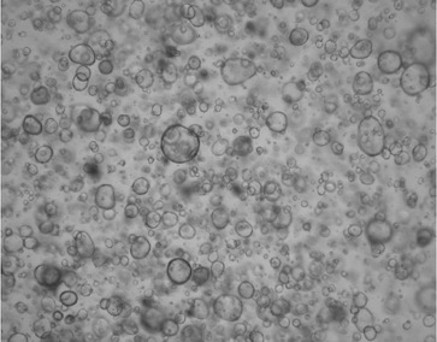
Pancreatic cancer organoids under the microscope
Human organoids are 3D in-vitro cellular models derived from patient samples. These organoids behave like their tissue of origin, so can mimic a tumour environment or a healthy organ environment. This makes them very attractive for experimental research because they offer initial insights into cell function and interactions without the need for animal testing at early stages.
The Human Organoid and Biobank facility, offered by the CRUK Convergence Science Centre, can support researchers across Imperial and the Institute of Cancer Research (ICR) who have never used organoids before to implement this technique into their own research. Find out how Caoimhe Walsh used the facility to support her research.
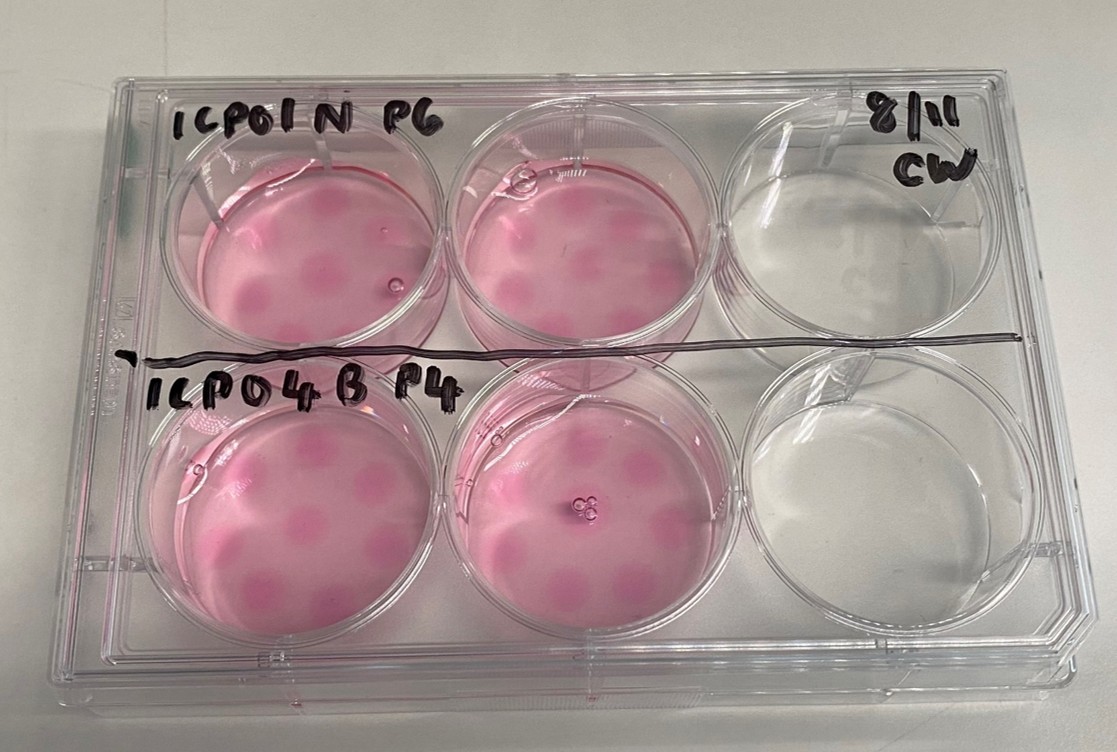
Some of the pancreatic cancer organoids Caoimhe has derived at the Convergence Science Centre
“In terms of my background, I’m a surgical trainee in the NHS, halfway through my higher surgical training. In 2022, I decided to pause my surgical training to undertake a period of dedicated research to complete a PhD, and started my Clinical Research Fellowship with Prof George Hanna at Imperial.
The research Prof Hanna’s team is primarily working on is to develop breath tests to detect multiple gastrointestinal cancers including oesophageal, gastric, colorectal, liver and pancreatic cancers. I’m especially interested in the pancreatic cancer research because this ties in with my clinical interest – in the future I hope to be a Hepato-Pancreato-Biliary (HPB) surgeon.”
“Alongside the large-scale studies collecting breath samples from patients, there’s also a lot of mechanistic work that we want to do in our group to understand how and why the breath tests work. The breath tests analyse volatile organic compounds (VOCs), which are chemicals that are released naturally in our bodies as part of our metabolism. Because we exhale the VOCs, they can be measured from breath samples to create a molecular “breath fingerprint.” In cancer patients, this breath fingerprint may change in subtle but detectable ways and we want to know what exactly is contributing to the change in VOCs: is it coming from the cancer cells in the tumour and the microenvironment around the tumour? Is it due to a change in the microbiome? Or is it the body’s response to the cancer?
My research is specifically looking to see if VOCs produced by pancreatic cancer cells are different to those from healthy pancreatic cells. Organoids are a great way to model this, and can help us better understand the metabolic changes happening in tissues.”
“Given I came from a medical background, I didn’t have any previous experience of working with 2D cell cultures, let alone 3D cell cultures, so it was difficult to know where to start!
Some of my colleagues at Imperial helped me get up to speed with general lab and cell culture skills, but to learn the specific skills required for working with organoids, I reached out to the Convergence Science Centre. The facility hosted me for a 1-week training programme as an introduction to organoids. This included some pre-reading, as well as a lot of hands-on practical skills. I learnt how to derive organoids from fresh tissue samples, how to split (passage) organoids, and how to troubleshoot any common issues.
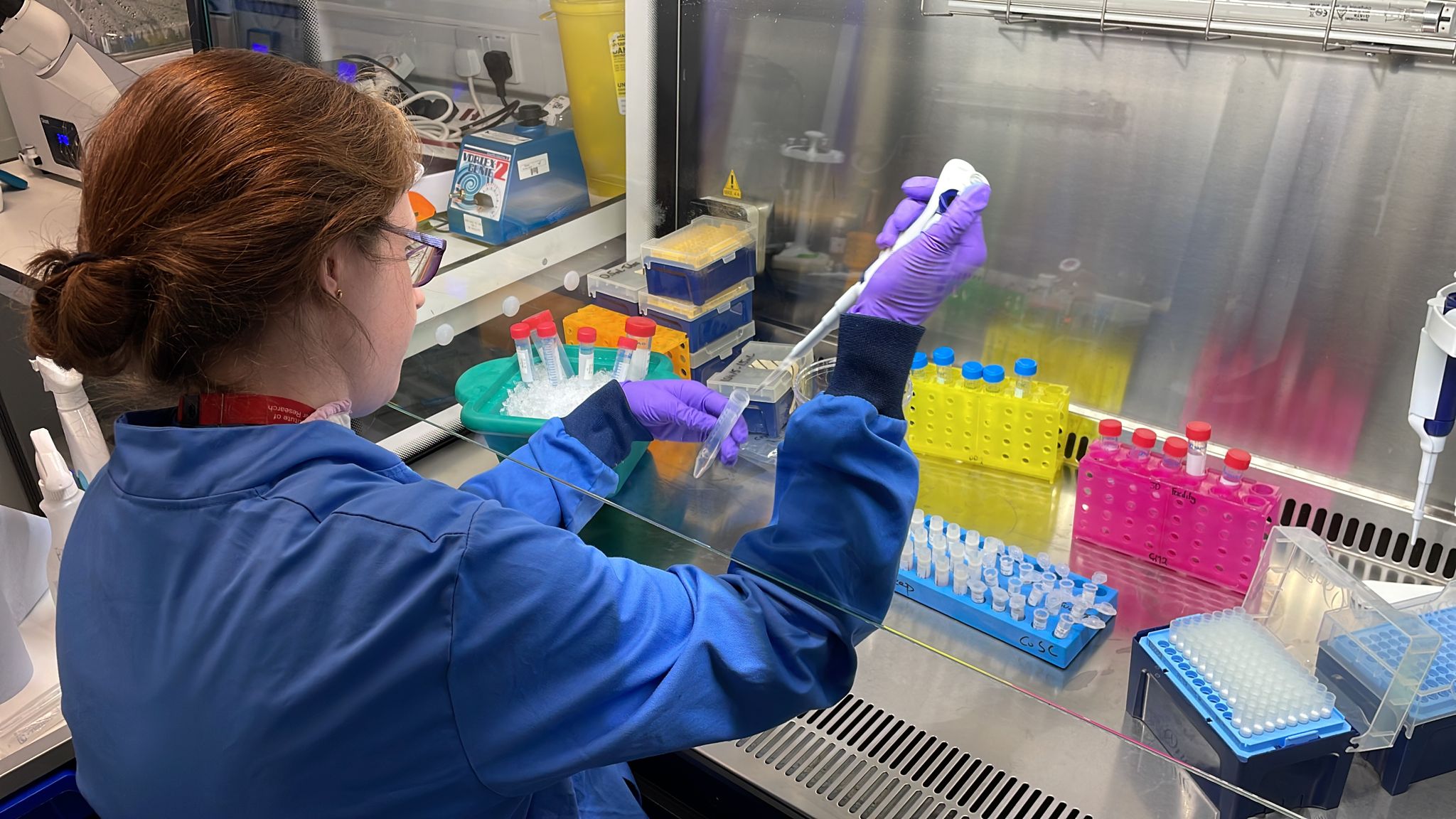
Caoimhe in the Convergence Science Centre Organoid Facility
My main contacts at the organoid facility are Sudeep and Diana, they were both extremely helpful for training purposes and also continue to provide a great amount of day to day support with deriving new organoids. It’s worth noting that the Human Organoid Facility can support researchers in various ways depending on your individual needs – you can either have a standalone training programme to learn the principles and then put this into practice in your own lab, or if you are looking to build an organoid biobank then the facility can continue to support the ongoing derivation and experimental work.
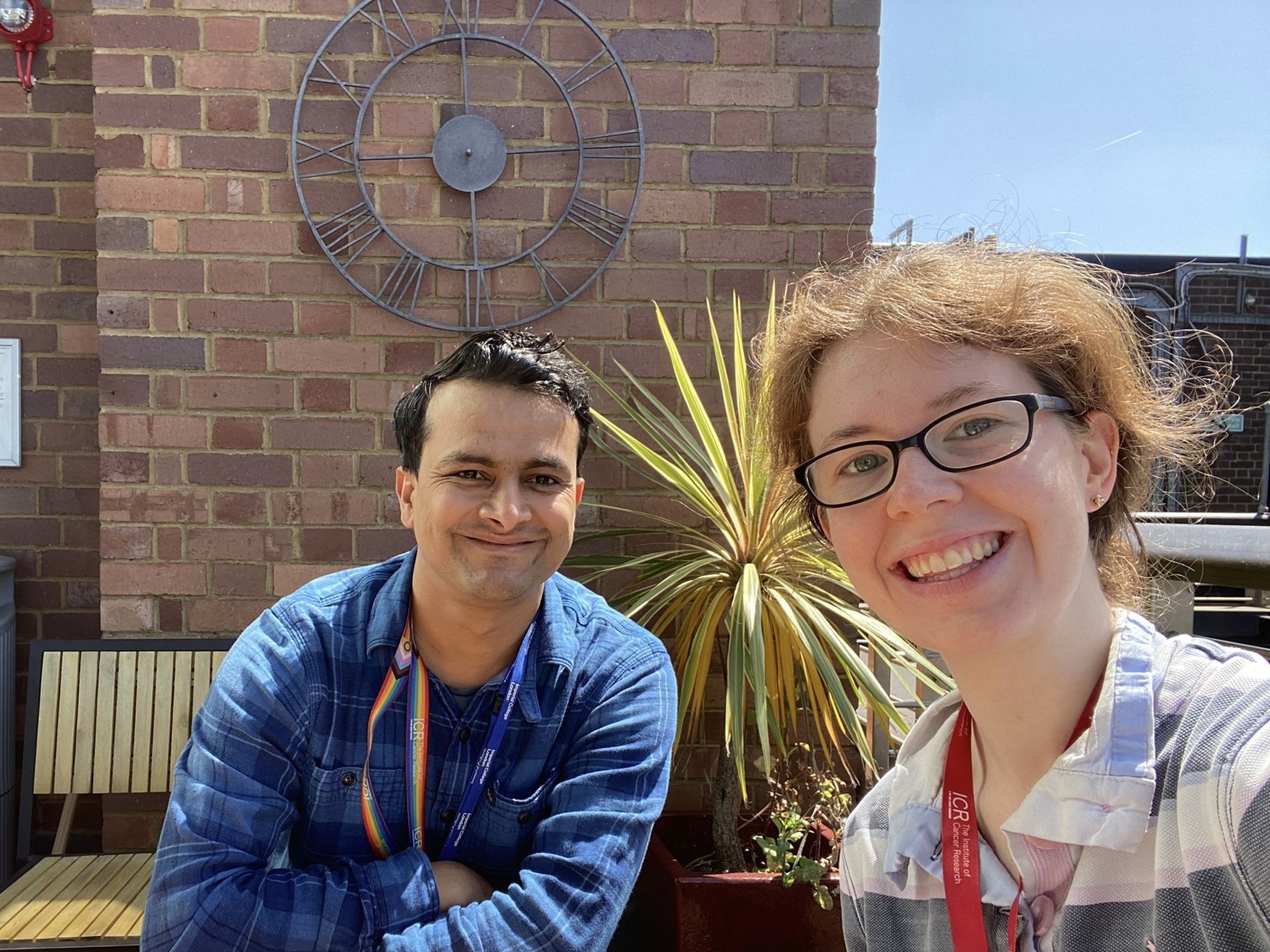
Sudeep Bhushal (left) and Caoimhe (right) enjoying some sunshine over lunch at the ICR
In my research, in addition to the organoids I’ve derived myself, I've been fortunate to have access to the existing biobank of organoids at the facility and have been able to thaw and expand some of these organoid lines to undertake experiments at the VOC Laboratory at Imperial.
The organoid facility has also helped me extend my training to cancer associated fibroblasts (CAFs).”
“The organoid facility provides the infrastructure, resources, expertise and even a support network to access additional expertise (such as bioinformatics). The convergence of clinical and non-clinical fields is really crucial for ongoing research: non-clinical researchers have the skills to derive patient organoids but they need patient samples, and researchers with clinical backgrounds have access to those patients and therefore potential samples.”
"After getting ethics approval to collect cancerous and non-cancerous specimens from patients undergoing pancreatic surgery, I’ve been deriving both cancerous and benign pancreatic organoids for the past 2 years now, and my findings will be part of the VAPOR study, which is still ongoing.
As a result of the support I had from the Organoid facility, I presented a poster at the European SIFT-MS Symposium in Prague demonstrating the technique we developed to measure VOCs using organoids and was awarded the Best Poster Prize. In 2024, I also secured a Medical Research Council Clinical Research Fellowship to continue to undertake my research, and I am immensely grateful to the organoid facility and members of the Behrens group for making this possible through all their support with my pilot work.”
Find out more about our Organoid and Biobank Facility and get in touch to see how we can support your research.
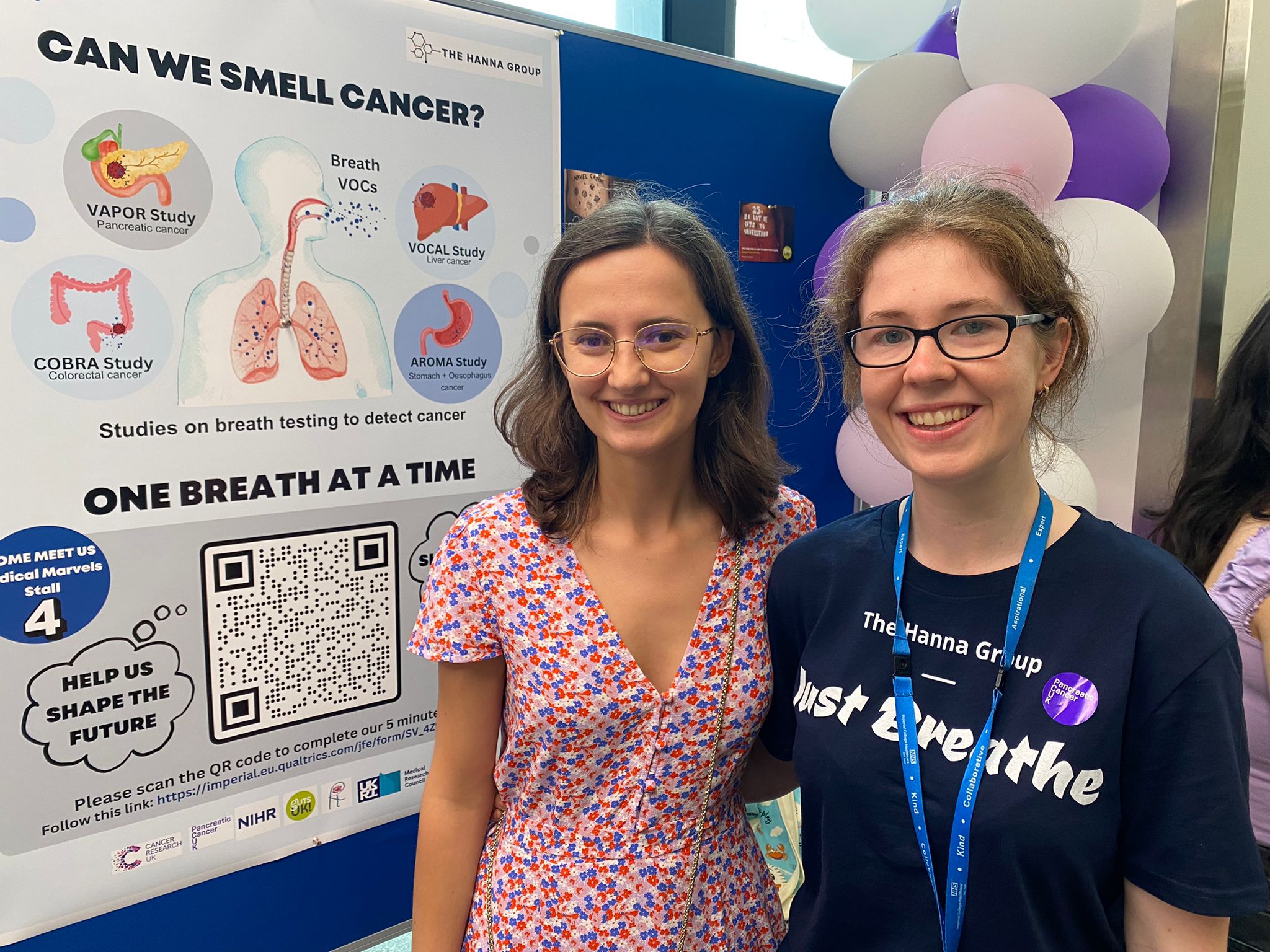
Diana David (left) and Caoimhe (right) at the Great Exhibition Road Festival